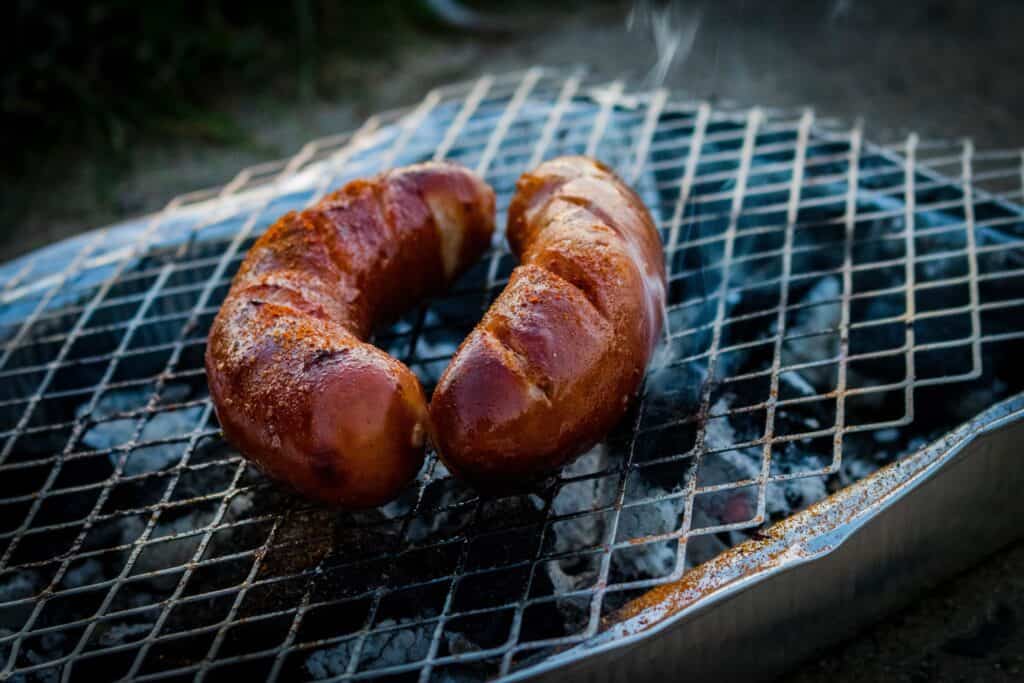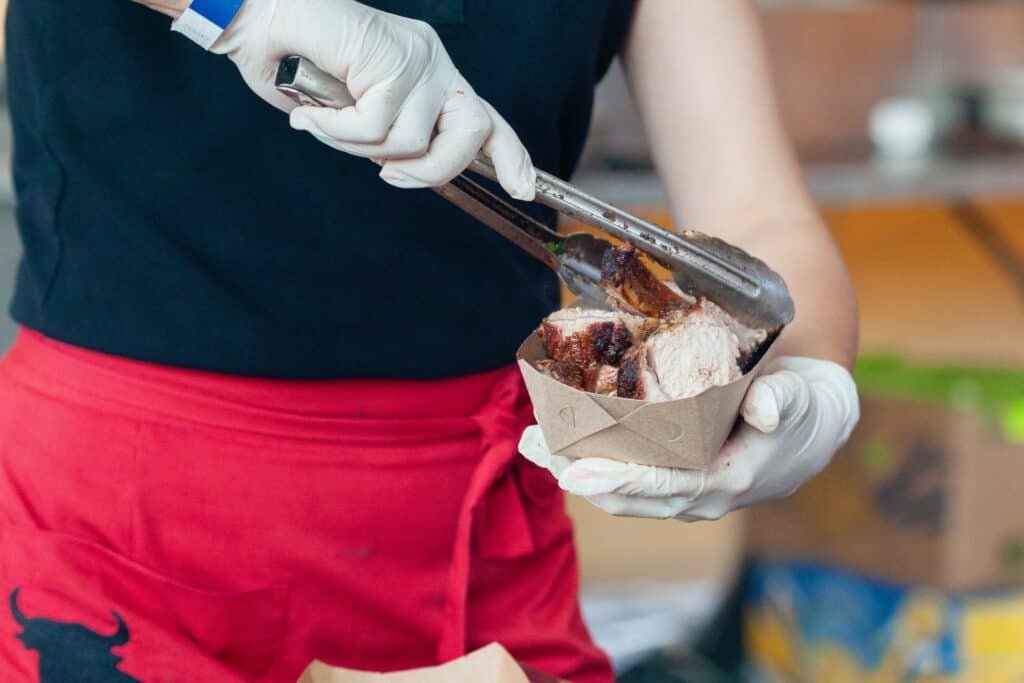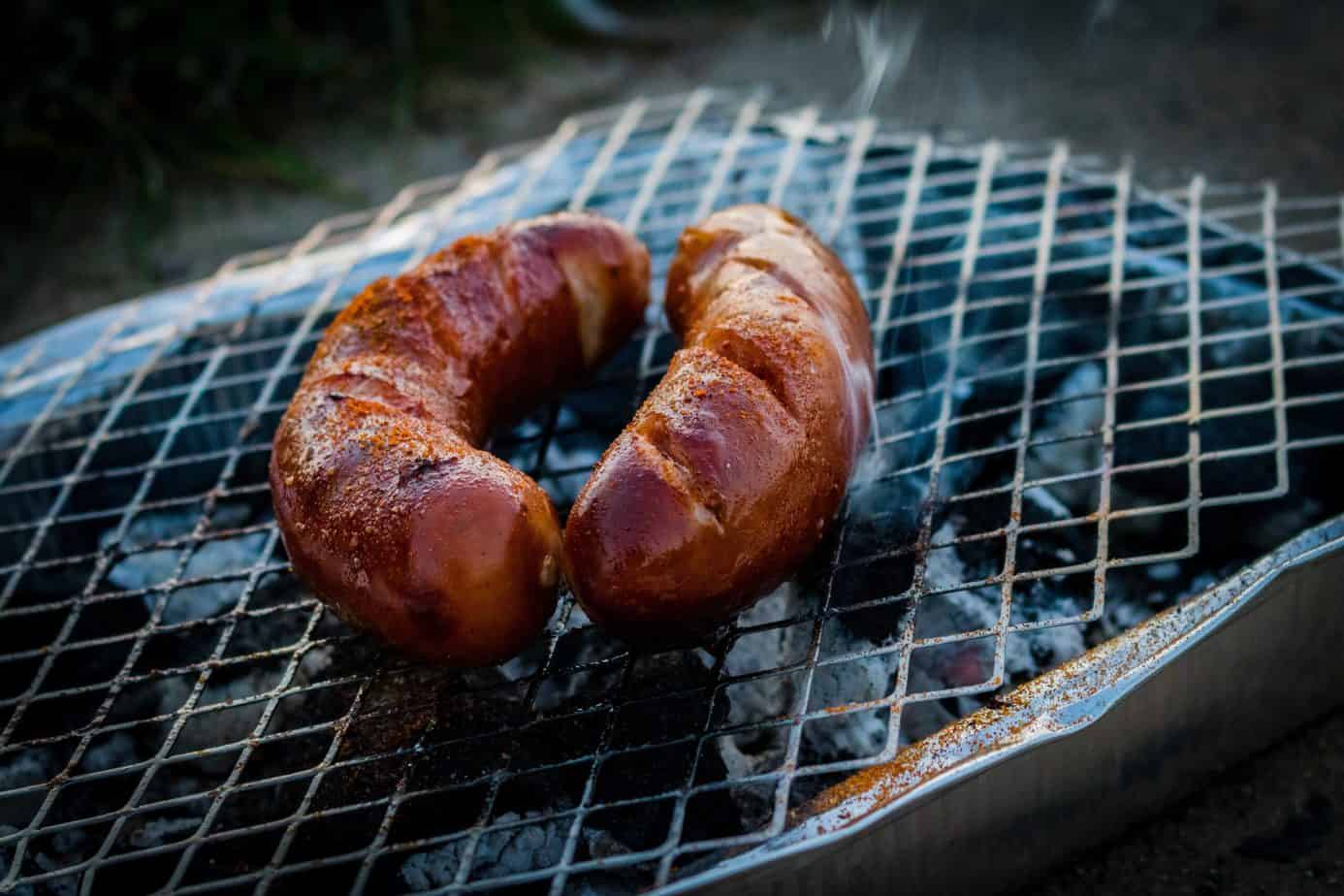How to tell if sausage is cooked? You can tell if sausage is cooked by checking the internal temperature with a meat thermometer. It should reach at least 160°F (71°C) for pork sausage and 165°F (74°C) for chicken or turkey sausage. You can also cut into the sausage and check if the juices run clear and there is no pink color inside.
Determining when a sausage is fully cooked is crucial for both food safety and cooking excellence. With a variety of sausages available, such as fresh, pre-cooked, and smoked, each requires specific cooking methods like grilling, pan-frying, or boiling to achieve the perfect doneness. This article serves as a comprehensive guide, offering insights into visual indicators of readiness, such as the color change from pink to brown and the shift in texture to a firmer, more succulent bite.

We emphasize the importance of internal temperature, recommending the use of a meat thermometer to ensure sausages reach a safe minimum internal temperature of 160°F (71°C) for pork and beef varieties, aligning with food safety guidelines. Additionally, we address other key indicators of doneness, including the clarity of juices that run clear and the firmness test, to help avoid common cooking mistakes like overcooking, which can lead to dry and less flavorful sausages. This guide aims to equip readers with the knowledge and techniques needed to confidently cook sausages to perfection.
Sausages are made by finely mincing meat and wrapping it around a thin layer of animal fat under pressure. There are many flavors and varieties of sausages made from meats like beef, turkey, pork, or chicken. To determine if sausage is cooked thoroughly, regardless of the cooking method used (grill, oven, or pan), continue reading for effective techniques and guidance to gauge cooking time accurately.(Source)
Understanding Sausage Cooking Basics
Cooking sausages correctly requires knowledge of various types and the best methods to prepare them. This section delves into the essentials of sausage cooking, from identifying the different kinds available to selecting the most suitable cooking techniques. Whether you’re a novice in the kitchen or looking to refine your skills, understanding these basics is key to achieving perfectly cooked sausages every time.
Types of Sausages
Sausages come in a myriad of forms, each with its own set of cooking requirements. The primary categories include:
- Fresh Sausages: These are made from raw meat and must be cooked thoroughly before consumption. Popular varieties include Italian sausage, breakfast sausage, and bratwurst.
- Pre-Cooked Sausages: Often smoked or boiled during manufacturing, these sausages include hot dogs and some types of kielbasa, requiring only reheating or browning before serving.
- Smoked Sausages: Fully cooked through the smoking process, these can be eaten as is but are often heated for flavor enhancement, including Andouille and smoked bratwurst.
| Sausage Type | Examples |
|---|---|
| Fresh Sausages | Italian sausage, Breakfast sausage, Bratwurst |
| Pre-Cooked Sausages | Hot dogs, Some types of kielbasa |
| Smoked Sausages | Andouille, Smoked bratwurst |
Each type demands specific preparation methods to ensure safety and optimize taste, making it essential to identify your sausage before proceeding with cooking.
Cooking Methods for Sausage
Choosing the right cooking method can significantly impact the flavor and texture of your sausage. Here’s a breakdown of the most common techniques:
- Grilling: Ideal for fresh and pre-cooked sausages, providing a smoky flavor and crispy exterior. Turn frequently for even cooking.
- Pan-Frying: Suitable for all types, allowing for even browning and thorough internal cooking. Add a small amount of oil to prevent sticking.
- Boiling: Best for fresh sausages, ensuring they’re cooked through without risk of burning. Boil in water or beer for added flavor.
| Method | Best For | Notes |
|---|---|---|
| Grilling | Fresh and pre-cooked sausages | Provides a smoky flavor, turn frequently |
| Pan-Frying | All types | Allows for even browning, use medium heat |
| Boiling | Fresh sausages | Ensures thorough cooking, can use water or beer |
Understanding these basics will not only ensure your sausages are cooked safely but also enhance their flavor, making every meal a delight. Remember, the key to perfect sausage lies in mastering the balance between heat, timing, and technique.
Knowing how to cook sausage is a useful skill to have.(Source)

Visual Indicators of Doneness
Cooking sausages to perfection involves more than just timing; it’s about observing the subtle changes that indicate they’re ready to be served. Recognizing these visual cues is crucial for anyone looking to master the art of sausage preparation. This section explores the key visual indicators that signify a sausage is cooked thoroughly, ensuring both safety and optimum flavor.
The most immediate indicator of a sausage’s readiness is its color transformation. Initially, sausages have a pinkish hue, but as they cook, they turn a golden brown or darker shade, depending on the type of sausage and cooking method employed. This color change is due to the Maillard reaction, a chemical reaction between amino acids and reducing sugars that gives browned food its distinctive flavor.
It’s essential to ensure that the sausage is uniformly browned, indicating it’s cooked evenly throughout. However, color alone can be deceptive, especially for sausages with certain seasonings or casings, so it should not be the sole determinant of doneness.
| Indicator | Description |
|---|---|
| Color Change | From pink to brown, indicating cooking through. |
| Texture | Firm exterior and springy touch, suggesting juiciness. |
Texture Transformation of Sausage
Another critical visual cue is the texture of the sausage. A fully cooked sausage should have a firm exterior, indicating a crisp skin, while the interior should feel firm to the touch, suggesting the meat is cooked through. This firmness is a result of the proteins in the meat coagulating and contracting, pushing out moisture and solidifying the texture.
To assess texture, gently press the sausage with cooking tongs; if it feels springy but not hard, it’s likely done. Be cautious, as overcooking can make the sausage too firm and dry, losing its juiciness and flavor.
By paying attention to these visual indicators—color and texture—you can significantly improve your sausage cooking technique, ensuring delicious results every time. Remember, while visual cues are helpful, they’re most effective when used in conjunction with a meat thermometer to confirm internal temperature, guaranteeing your sausages are perfectly cooked and safe to eat.

Internal Temperature Checking of cooked sausage
Ensuring your sausage is thoroughly cooked goes beyond mere observation; it requires precise measurement. The internal temperature is the most reliable indicator of whether a sausage is safely cooked and ready to eat. This section delves into the importance of reaching the correct internal temperature, providing a foolproof method to eliminate guesswork from sausage preparation.
Safe Internal Temperature of cooked sausage
For sausages made from pork, beef, or any combination thereof, the U.S. Department of Agriculture (USDA) recommends an internal temperature of 160°F (71°C) as the safe minimum. Reaching this temperature ensures harmful bacteria are killed, making the sausage safe for consumption. Using a meat thermometer to check the internal temperature is not just advised; it’s essential for health and safety.
To accurately measure the temperature, insert the thermometer into the thickest part of the sausage, avoiding any fat or gristle, which can give misleading readings. The importance of this step cannot be overstated; it is the linchpin in the process of cooking sausages safely and effectively. It ensures that, regardless of the cooking method or the size of the sausages, you can confidently serve them knowing they are perfectly cooked and safe to eat.
Using a Meat Thermometer for cooked sausage
Choosing the right meat thermometer and using it correctly are key. A digital instant-read thermometer is ideal for its quick, accurate readings. When cooking sausages, periodically check the temperature towards the end of the cooking time to avoid overcooking, which can dry out and toughen the meat.
| Focus | Details |
|---|---|
| Safe Internal Temperature | 160°F (71°C) for pork and beef sausages |
| Meat Thermometer | Insert in the thickest part, digital instant-read recommended |
Other Key Indicators to Watch For Doneness of Sausage
While internal temperature is the gold standard for assessing doneness, there are additional cues that can help ensure your sausages are cooked perfectly. This section explores other critical indicators to be mindful of during the cooking process. By paying attention to these signs, you can refine your cooking technique and ensure that every sausage you prepare is a culinary delight.
When a sausage is cooked, the juices it releases as it rests should be clear, not pink or bloody. This is a telltale sign that the sausage has reached the appropriate internal temperature, and the proteins within have coagulated properly. Observing the color of the juices that escape upon slicing or pricking the sausage can provide a quick and easy indication of its doneness, especially useful when grilling or pan-frying.
However, it’s important to note that some sausages, especially those with high fat content or specific seasonings, might still show slightly pink juices even when fully cooked. In such cases, the internal temperature check remains the most reliable method. Yet, in the absence of a meat thermometer, clear juices are a good preliminary indicator of a fully cooked sausage.
The Firmness Test of sausage after cooking
Another practical method to gauge doneness is the firmness test. Gently pressing the sausage with a pair of tongs can reveal a lot about its internal state. A cooked sausage should feel firm but still slightly springy to the touch, indicating that the meat is cooked through but retains moisture for a juicy bite.
This tactile feedback, combined with visual cues and temperature checks, forms a comprehensive approach to determining sausage doneness. It’s a simple yet effective way to ensure that your sausages are cooked perfectly.
| Focus | Details |
|---|---|
| Safe Internal Temperature | 160°F (71°C) for pork and beef sausages |
| Meat Thermometer | Insert in the thickest part, digital instant-read recommended |
Common Mistakes while checking if sausage is cooked well and How to Avoid Them
This section is dedicated to highlighting common pitfalls in the process of cooking sausages and providing practical advice on how to avoid them. By being aware of these issues, you can ensure that your sausages are always cooked to perfection, juicy on the inside and crispy on the outside.
One of the most common mistakes when cooking sausages is overcooking, which can lead to dry, tough, and less flavorful outcomes. Sausages are often left on the heat for too long in the pursuit of ensuring they are fully cooked, sacrificing moisture and taste in the process. The key to avoiding overcooking is to closely monitor the internal temperature, aiming for the recommended 160°F (71°C) for pork and beef sausages. Once this temperature is reached, remove the sausages from the heat immediately to prevent further cooking.
Additionally, understanding the cooking method that best suits the type of sausage you are preparing can also help prevent overcooking. For instance, gentle cooking methods like simmering in water or beer before finishing on a grill or pan can help maintain juiciness and flavor. By mastering these techniques, you can ensure your sausages remain succulent and delicious every time.
Achieving evenly cooked sausages can sometimes be a challenge, especially when using high heat methods like grilling or pan-frying. Uneven cooking can result in sausages that are burnt on the outside and undercooked on the inside. To avoid this, it’s crucial to turn sausages regularly, allowing each side to cook evenly and develop a uniform color and texture. Using indirect heat when grilling and a medium heat setting when pan-frying can also contribute to more consistent cooking throughout the sausage.
Moreover, allowing sausages to reach room temperature before cooking can promote more even heat distribution. Cold sausages placed directly on heat are more likely to cook unevenly. By following these simple tips, you can achieve perfectly cooked sausages that are evenly browned and thoroughly cooked, enhancing the overall dining experience.
| Common Mistake | How to Avoid |
|---|---|
| Overcooking | Monitor internal temperature, choose correct method. |
| Uneven Cooking | Regular turning, use indirect or medium heat. |
Bonus Sausage Recipe: Check out how to make sausage egg and cheese egg wake up wrap recipe
If you found this post enjoyable, consider sharing it with others who may appreciate it.
For additional information on recipes and cooking tips, please visit our website.



